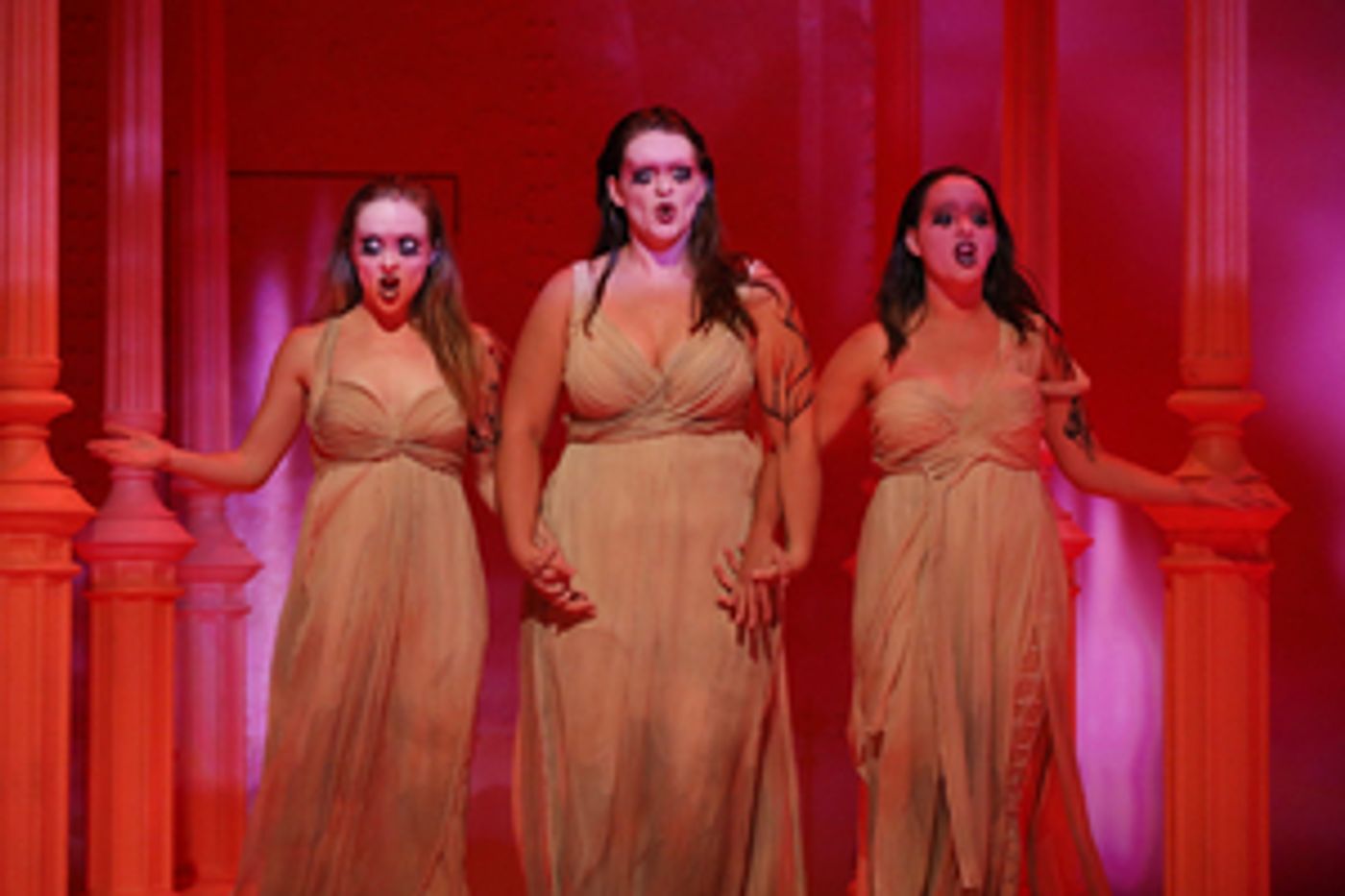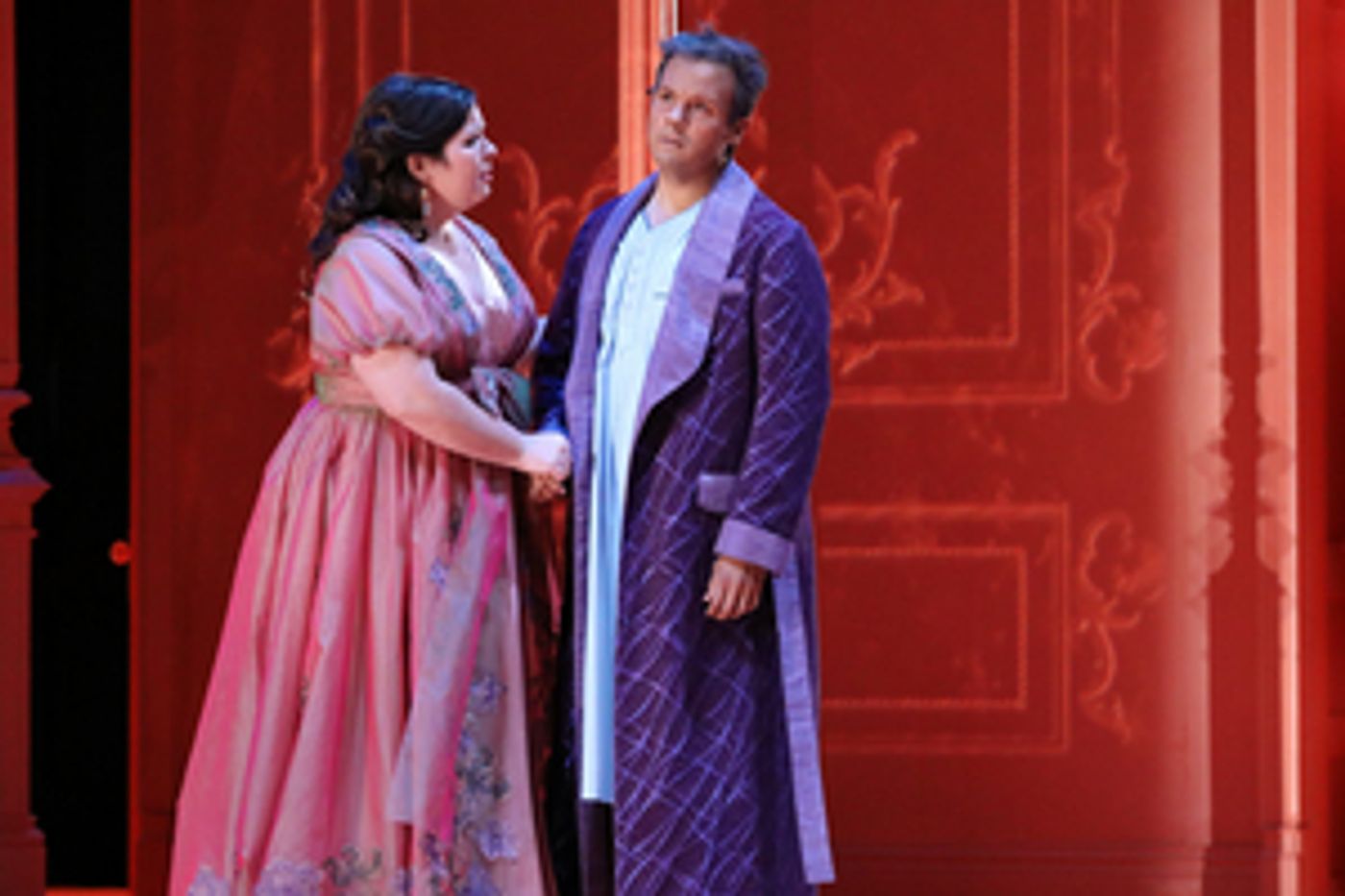BWW Reviews: Santa Fe's Back with a MIDSUMMER Treat and a LORD-ly Mishap
Something Old, Something New, Something Fresh, Something Less

Photo: Curtis Brown/Santa Fe Opera
There are a number of parallels between the two operas I saw in Santa Fe (NM) this past weekend: The Benjamin Britten/Peter Pears treatment of Shakespeare's A MIDSUMMER NIGHT'S DREAM and the world premiere of the John Corigliano/Mark Adamo THE LORD OF CRIES. The first was, for me at least, an all-around, marvelous success, while the other was a disappointment, except for a few of the performances, including Anthony Roth Costanzo as the Dracula stand-in Dionysus/Lord of Cries.
Both operas were written by notable couples in the opera world and proved that pillow talk is not necessarily the best way to write an opera, although it sometimes can turn out a significant achievement.
First for LORD, which arrived with high expectations as Corigliano's first opera since THE GHOSTS OF VERSAILLES. Anyone who saw Roth Costanzo in the title role of Philip Glass's AKHNATEN in the Met's most recent season is aware that he knows how to command a stage--and he proved it once again from the moment he arrived on the scene.

Curtis Brown/Santa Fe Opera
As the ancient Greek Dionysus--the opera has roots both in Euripides's "The Bacchae" and Bram Stoker's Dracula--he enters to explain both how he got where he was (wreaking bloody vengeance on ancient Thebes) and where he is going. "Where shall I be?" he asked and the answer is Victorian London of 1897, where, as the Lord of Cries, he has come to take possession of Carfax Abbey and its asylum (killing numerous young women through his minyans, the Three Sisters, a far cry from Chekhov's).
The only problem I had with his performance was that there wasn't enough of it, using his distinctive countertenor to show off Corigliano's often seductive score, conducted skillfully by Johannes Debus. Personally, I could have wished for more dissonance in developing the character--along with a great deal more help from librettist Adamo--but what Roth Costanzo gave us was fine indeed, though the Dracula-figure that Adamo sketched out for him in Act I was on the tame side.
The work is not a one-man show by any means. The other standout performance was from tenor David Portillo as Jonathan Harker, whose mind has been shattered by his dealings with the Lord and the Three Sisters (relatives of Shakespeare's witches from "Macbeth," adding much toil and trouble to the proceedings), ably performed by Leah Brzyski, Rachel Blaustein and Megan Moore. Portillo's singing was sublime and his portrayal of the madman enthralling.

Photos: Curtis Brown/Santa Fe Opera
A last-minute replacement for the well-known Susanna Phillips in the key role of Harker's wife Lucy was apprentice singer, soprano Kathryn Henry. She began somewhat tentatively, with the weak Act I libretto no help, but grew into a major force--and showed off a big, rich voice--as she tried to save her husband by leafing through his travel diary but ended (SPOILER ALERT!) by becoming one more victim of the Lord.
Baritone Jarrett Ott as Dr. Seward, who inherited the role of mayor from his father while retaining his post as head of Carfax asylum. As a friend of Harker from childhood and enamored of Lucy, he was another performer who fell victim to Act I's problems, lacking the charisma (though not the voice) to pull off the drama; he was much improved in Act II, with his eventual madness, and sounded quite lovely in his duet with Lucy, one of Corigliano's most lovely moments.
A pair of basses were not shown off to their best advantage, though Matt Boehler did well enough in the underwritten role of Van Helsing. Kevin Burdette had the thankless task of narrating material that should have been drawn musically and dramatically, which seemed done to shorten the work (which still seemed at least 15 minutes too long) rather than clarify the action.
The chorus did excellent work under Susanne Sheston.
Part of the blame for the work's shortcomings must go to director James Darrah, who seemed to think his bag of tricks could make up for missing ingredients, though he found his footing with the improved writing in Act II. In Broadway musicals, they often talk about "second act trouble," where the creators can't figure out where to go; here, the opposite was true and the work grew stronger as it developed and Darrah ran with it.
Chrisi Karvonides-Dushenko's did creative work with LORD's costumes but the less said about the scenic design by Adam Rigg, the better, though it was improved by Adam Larsen's projections.
Many members of the audience seemed to have attended several of the opera's performances and had grown quite attached to it. Perhaps, after multiple viewings, it might have seemed better. But on first look (on July 30), I found it less than compelling.

Photos: Curtis Brown/Santa Fe Opera
And Now for Something Completely Different: A MIDSUMMER NIGHT'S DREAM
A MIDSUMMER NIGHT'S DREAM, on the other hand, had me at first glance and hearing (on July 31) and gave me new appreciation for Britten's writing. Of course, I'd seen it in its dramatic and movie forms so it was not completely unfamiliar, but this was my first time at the opera and I found the musical side--conducted by Harry Bicket, Santa Fe's Music Director--appealing, adding greatly to the pleasures of the Shakespeare work, in this retelling by famed tenor Peter Pears.
The wonderful production in the Athenian woods, which came to Santa Fe via Britain's Garsington Opera was directed, designed, costumed and had projections by Netia Jones, with Santa Fe's glorious sunset adding additional pleasures to the opera's opening moments. (Lighting by DM Wood.)

Photos: Curtis Brown/Santa Fe Opera
One of the things the two operas had in common was their dependence on intertwining story elements. In this case, it was the marriage of royals, the tricks of the fairy kingdom and an acting company trying to get together its performance for the marriage celebration.
The result is a truly ensemble piece, calling on so many standout performers that it could make your head spin, making it hard to figure out where to start the praises.

Photos: Curtis Brown/Santa Fe Opera
So I'll start with a singer quite familiar to me: silver-voiced soprano Erin Morley, as Tytania, Queen of the Fairies--a frequent Sophie in ROSENKAVALIER at the Met--who sounded lovely and expertly handled her comic interludes with the player Bottom (a fine Ashley Riches) turned into an ass. While countertenor Iestyn Davies, as her king, Oberon (the cause of many of the dramatic problems in the text), took an act to warm up--and has a less endearing role to begin with--he was nonetheless an effective player.

Brown/Santa Fe Opera
The two pairs of young lovers--caught up in Oberon's trickery with the aid of the lightweight (in the production's concept) but physically agile Puck of Reed Duplau, who also choreographed--were utterly charming. Tenor Duke Kim (a Met National Auditions winner in the latest iteration) was a delight as Lysander opposite the charming Hermia of soprano Adanya Dunn, while baritone Michael J. Hawk was a wry, manly Demetrius to the frustrated Helena of soprano Teresa Perrotta. Their changing partners and physicality of their wrestling worked marvelously well. Bass Cory McGee and mezzo Lindsay Kate Brown were nicely coupled as the battling soon-to be-wed royals, the Duke of Athens and Queen of the Amazons.
However, stealing the show was the frequently silly troupe of players, who have come to the forest to rehearse their play to entertain at the nuptials ahead and get caught up in the shenanigans of the fairies and other mortals.

Photos: Curtis Brown/Santa Fe Opera
Bass Kevin Burdette is a smashing physical comedian (and no slouch vocally either) as Quince, who is in charge of getting the play (Pyramus and Thisby) into shape, while tenor Brenton Ryan is a hoot and a half, forced to play the drag role of Thisby to Nicholas Brownlee's Pyramus. Patrick Carfizzi and Matthew Grills (a hilarious wall separating Pyramus and Thisby) were other delightful members of the troubadours.
The wonderful chorus, which kept popping in and out of gopher holes in the set, was led by Susanne Sheston.
The fight director was the able Rick Sordelet.

Photos: Curtis Brown/Santa Fe Opera
This is one of Shakespeare's "all's well that ends well" comedies, as the lovers return to their proper pairings, the actors get well paid, the triple wedding takes place and "those just wed make their respective ways to bed." And the audience definitely went home happy.
For more information about future performances and tickets, see the Santa Fe Opera's website.
Reader Reviews
Videos

